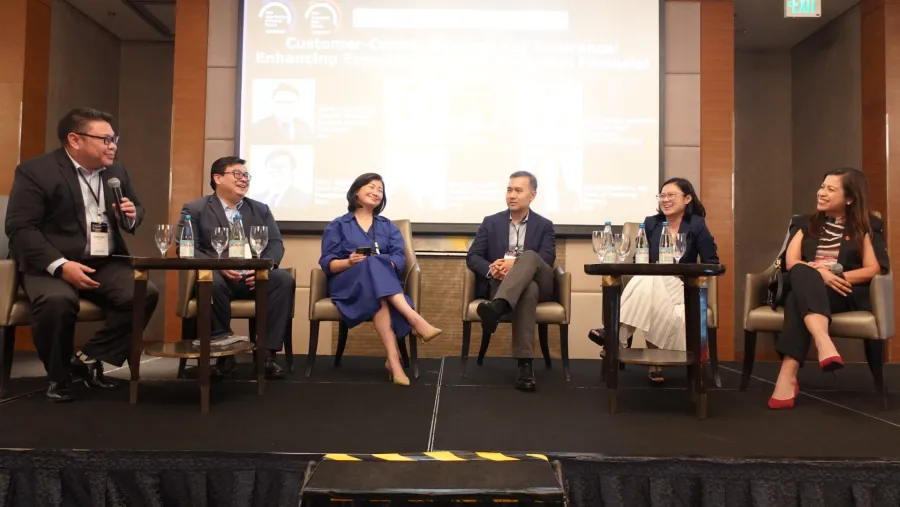
Why Philippine banks, insurers embrace hyper-personalized services
Industry experts push for the rapid progress of unified customer data as a starting point.
Banks and insurance companies in the Philippines are prioritising hyper-personalised, data-driven services by unifying customer data, automating processes, and maintaining deep personal relationships, amidst rapid change in customer expectations.
Moderated by Alvin Dave Pusing, director, Financial Services and Risk Consulting at PwC, the Asian Banking & Finance and Insurance Asia Summit bagged 286 attendees, last 1 October at the Makati Shangri-La, Philippines, featuring leaders from the Philippines’ banking and insurance industries who shared insights into their ongoing customer-centric transformations.
"At BPI, we don’t just aim for customer-centricity—we strive for customer obsession," stated Maria Cristina L. Go, head of Consumer Banking at the Bank of the Philippine Islands (BPI).
"Being obsessed means knowing what our customers need even before they do," she elaborated, highlighting the challenge of leveraging data and technology to not only meet but exceed customer expectations.
Similarly, Tricia Tan, chief marketing officer at Security Bank told the importance of “placing the customer at the heart” of every organisational decision.
"We want to be the most customer-centric bank in the Philippines, at least for the customers that we serve," she said. This vision is driving banks and insurance companies to rethink their processes, from marketing to product design, with personalization as a cornerstone.
Data: The backbone of personalisation
Personalisation at scale remains a top priority for financial institutions, and the key to achieving this lies in data. "Unified customer data is the starting point," said Tan.
Without it, identifying customer preferences or offering tailored services becomes a daunting task. The challenge, she explained, is in unifying data across various channels—whether through apps, websites, or branches—so that companies can develop a seamless customer journey.
BPI has applied this approach by integrating a 360-degree customer view, which allows the bank to continuously refine its customer insights.
"We've had a 360-degree view of our customers for a long time, which helps us understand not just their demographic data, but also transactional data," Maria Cristina explained. By mining this wealth of information, BPI is able to offer targeted marketing, pre-qualify clients for products, and even predict customer behaviours such as potential churn.
The human element
However, it’s not just about data and technology. The human element remains crucial in building relationships, especially in institutional banking.
Carlo Nazareno, head of Cash Management Services, BDO, the head of cash management, noted that whilst consumer banking often leans heavily on data and trends, institutional banking relies on deeper, more personal relationships.
"You need to understand not only the institution but the decision-makers within it. Decisions often come down to one or two key individuals," he pointed out.
Building trust with these decision-makers, Nazareno added, is critical for success. This is especially true when working with smaller enterprises or first-generation startups that may lack experience in streamlining financial operations.
"Understanding where the client is in their treasury transformation journey allows us to tailor solutions to their specific needs," he said. By starting small—perhaps with something as simple as a chequebook or online banking—and progressively scaling up, banks can grow alongside their clients.
Technology, of course, is the enabler that makes personalization at scale possible. The panellists shared several tools and techniques their organisations employ to understand their customers better.
"We use both qualitative and quantitative research methods," noted Go.
However, she stressed that nothing beats the value of direct customer engagement. "Our frontliners are our ears, hands, and feet on the ground. We immerse ourselves in different areas of the bank to understand what they experience, which helps us prioritise actions for transformation."
Automation is another crucial factor. As Tan explained, to handle large volumes of customers, you need automated processes in place to manage data and personalise interactions effectively.
"Without automation, personalising at scale would be impossible," she said. This includes setting up marketing tools that can create nudges and triggers based on unified customer data, allowing for seamless integration across multiple touchpoints.
For Nazareno, the key challenge in institutional banking is aligning the technology with both global and local standards.
"In institutional banking, our role is to add efficiencies for treasurers and finance teams," he explained. This means implementing solutions that simplify their operations, like adopting global standards such as ISO 2022 whilst ensuring the technology is adaptable to local regulations.
"Even with standardised file formats like PESONet and InstaPay, the data transmitted isn't always consistent across banks. Industry collaboration is needed to standardise this data," he added.
Experimentation and innovation
The panellists also emphasised the importance of experimentation. Isabela Rae Ver-Bibal, head for Client Experience at Sun Life Philippines noted that their team is working on "insights activation programs" where multidisciplinary teams co-design products and services with clients, based on real-time feedback.
"It's about building the muscle to ask the right questions and having the tools to experiment and fail fast," she said. This iterative process of trial and error helps the company innovate and adapt quickly to meet customer needs.
Noel Tordesillas, head of E-Channel, Business Channels at Etiqa shared an example of how digital metrics, such as website bounce rates, have been instrumental in improving customer interactions.
"We noticed a high drop-off rate at the page asking for the VIN number during car insurance applications, so we added a 'save for later' option," he said. This simple change allowed customers to return to their applications at a more convenient time, reducing frustration and improving the overall user experience.
Outlook
Customer-centricity is no longer just a strategy—it’s a necessity for survival in the competitive financial services landscape, the panellists overall coined.
Whether through leveraging data, fostering deeper relationships, or embracing technology, banks and insurers are working to create more personalised, seamless, and efficient customer experiences.
"In the end, it’s about understanding the client’s position in their business and offering solutions that fit their unique needs,” added Nazareno.



















 Advertise
Advertise








